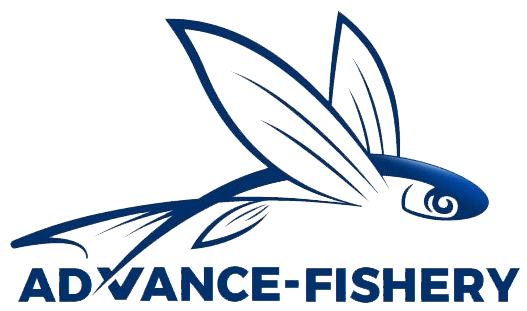Seaweed” is the common name for countless species of marine plants and algae that grow in the ocean as well as in rivers, lakes, and other water bodies. Seaweed, or marine algae that grow along seashores. Seaweeds are generally anchored to the sea bottom or other solid structures by root like “holdfasts,” which perform the sole function of attachment and do not extract nutrients as do the roots of higher plants. A number of seaweed species are edible, and many are also of commercial importance to humans. Some are used as fertilizers or as sources of polysaccharides.

Seaweeds often form dense growths on rocky shores or accumulations in shallow water. Many show a well-established zonation along the margins of the seas, where the depth of the water is 50 metres (about 165 feet) or less. The types of seaweed growing near the high-water mark, where plants are often exposed to air, differ from those growing at lower levels, where there is little or no exposure.
Even though they may look like underwater plants—in some cases, growing in excess of more than 150 feet in length—seaweeds are not plants at all. Instead, marine algae or seaweed are a group of species from the Protista kingdom that fall into three distinct groups:



Seaweed Culture: Bangladesh has a coastal zone of 480 km coastline and 25,000 km2 of coastal area with a huge population, supporting a variety of land use practices. This coastal area with sandy and muddy beaches, estuaries and mangrove swamps can be provided suitable substrate and habitats for various seaweeds cultivation. Seaweeds are available along the whole Bangladeshi coast, mostly in St. Martin Island, Cox’s Bazar and Sundarbans Mangrove forest.
The experimental site of Saint Martin Island was sandy and rocky bottom, protected by the coral reef with slanting; wave action was weak, which supported favorable environment for several seaweed species. Inani beach site has sandy bottom with boulders, pebbles, broken shells and naturally occurring Padina, Enteromorpha, Gracilaria, Hypnea species were observed in this area. Bakkhali river estuary site was sandy to muddy bottom with luxuriant growth of different seaweeds. The experiment was conducted for a period of 60 days from December 2015 to January 2016.

Available seaweed species in Bangladesh:
About 193 seaweed species of 94 genera belonging to only three major divisions i.e. Chlorophyta-green seaweed, Phaeophyta-brown seaweed, Rhodophyta-red seaweed are available in Bangladesh.
Commercially important seaweed species:
Among the available seaweed species, 19 species of 14 genera are considered as economically important
| SL No | Genus | Species | Types |
| 1. | Caulerpa | Caulerpa racemosa
Caulerpa sertularioides |
Green Seaweed |
| 2. | Enteromorpha | Enteromorpha intestinalis
Enteromorpha moniligera |
Green Seaweed |
| 3. | Gelidiella | Gelidiella tenuissima | Red Seaweed |
| 4. | Halymenia | Halymenia discoidea | Red Seaweed |
| 5. | Hypnea | Hypnea pannosa
Hypnea valentiae Hypnea musciformis |
Red Seaweed |
| 6. | Hydroclathrus | Hydroclathrus clathratus | Brown Seaweed |
| 7. | Sargassum | Sargassum oligocystum | Brown Seaweed |
| 8. | Gelidium | Gelidium pusillum | Red Seaweed |
| 9. | Padina | Padina tetrastromatica | Brown Seaweed |
| 10. | Catenella | Catenella spp | Red Seaweed |
| 11. | Porphyra | Porphyra spp. | Red Seaweed |
| 12. | Gelidium | Gelidium amansii | Red Seaweed |
| 13. | Codium | Codium fragile | Green Seaweed |
Natural production of seaweeds:
Approximately, 5,000 metric ton seaweed biomass is annually available throughout the whole Bangladeshi coast from October to April.
Season of seaweeds’ availability:
Seaweeds in Bangladesh are available in winter, spring and summer seasons and unavailable in rainy or autumn season. On that basis, in Bangladesh generally seaweeds are available from October to April, but highest abundance occur from January to March.
Benefits:
- May protect the heart. High-fiber foods such as algae may also reduce levels of cholesterol in the blood. These soluble fibers bind to bile acids or salts in the body. The body then uses cholesterol to replace these elements, which may result in a decrease of total cholesterol by up to 18 percent.
- It may help with weight loss. Seaweed contains a lot of fiber, which does not contain any calories. Seaweed is also considered to have anti-obesity effects.
- It contains Iodine and Tyrosine, which support Thyroid function. The thyroid gland controls and releases hormones for energy production, growth, and cellular repair.
- Each type of seaweed may contain slightly different nutrients and minerals. In general, however, eating this marine algae is a simple way to boost a person’s intake of vitamins and minerals without adding many calories.
- Provides Fiber and Polysaccharides That can support your gut health.
- Seaweed can enhance growth and immune system of fishes reducing the feed cost as it contains many nutrients and bioactive compounds.
